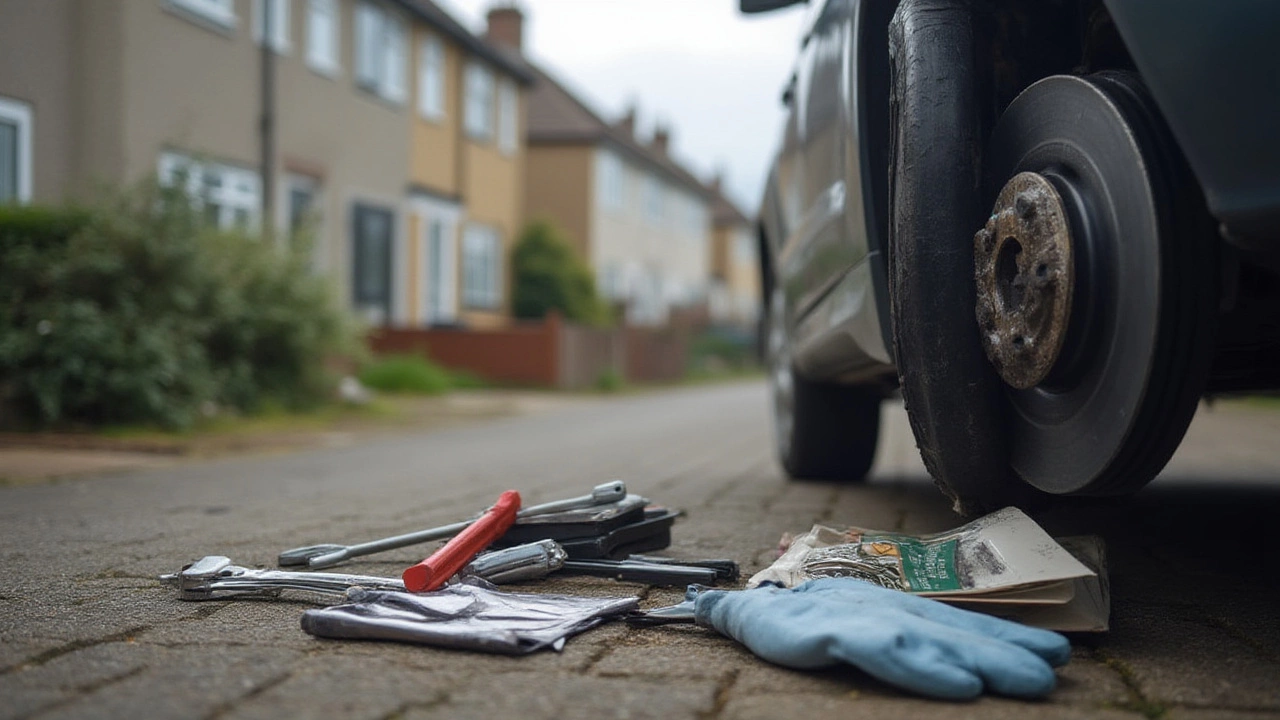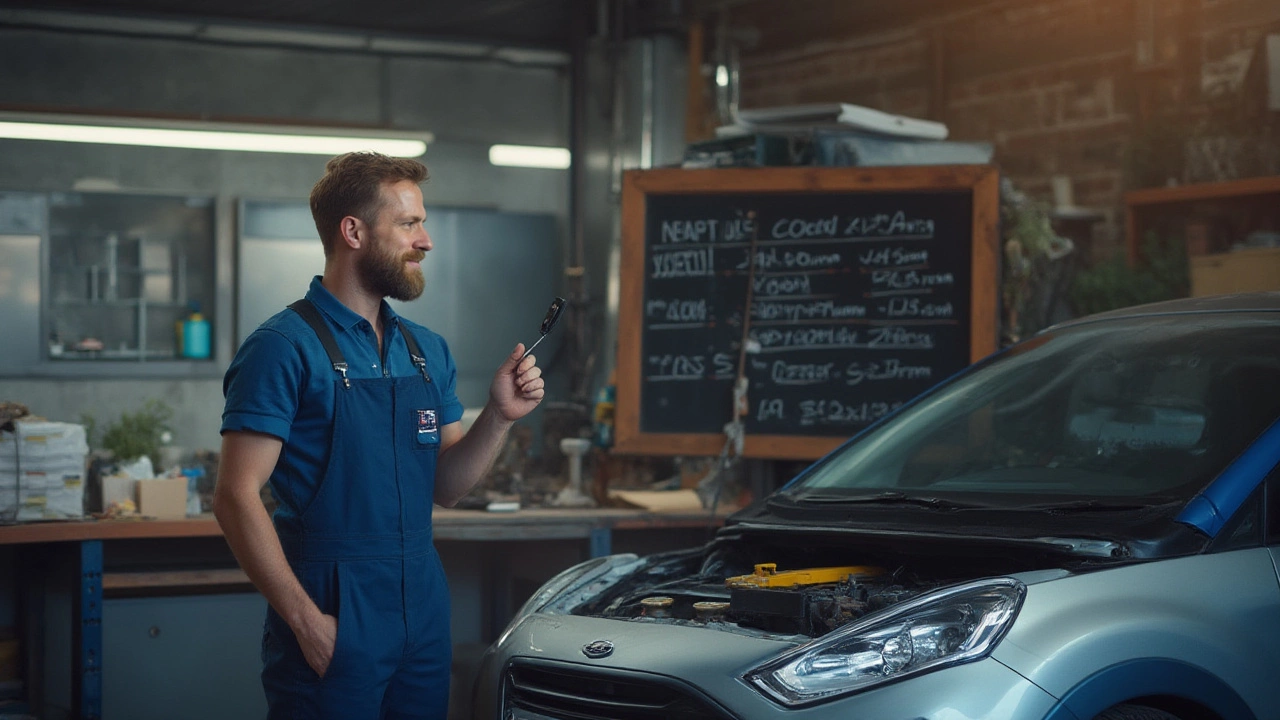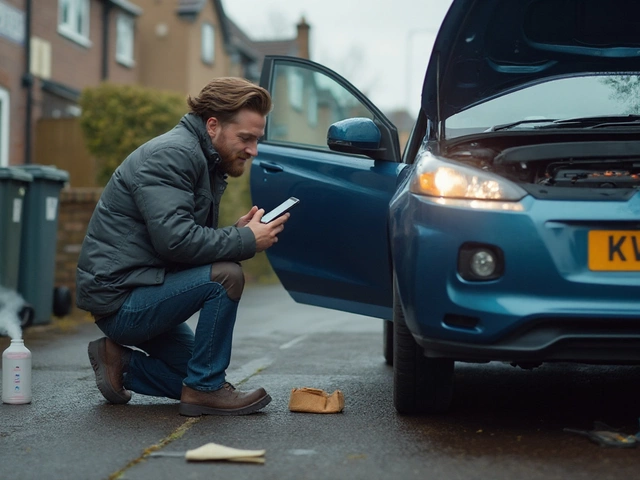Feel your car pulling up slower than normal? Hear that grinding noise every time you rest your foot on the brake pedal? You’re not imagining it. According to the AA here in the UK, worn-out brake pads are among the top five reasons drivers end up stranded on the hard shoulder. Funnily enough, most of us wait far too long before facing the music, worried a garage will fleece us or the cost will punch a hole in our monthly budget. But how much does it really cost to change brake pads right now? The truth might just be more reasonable than you think—if you know what to look for.
How Brake Pad Replacement Costs Break Down
Right, so here’s what usually determines what you’ll pay: make and model of your car, which axle you’re servicing (front, back, or both), and where you get it done. In July 2025, the ballpark for changing brake pads on an average car—let’s say a Ford Fiesta or VW Golf—is between £110 and £180 per axle. That covers both front pads or rear pads, including parts and labour. If you drive a BMW, Audi or Jaguar, expect this to shoot up—luxury car brake jobs can stretch to £250–£400 an axle. Fancy an electric car? Replacement parts often cost a bit more, though EVs tend to need new pads less often, thanks to regenerative braking.
Let’s look at where your money goes. Labour often makes up nearly half the bill—mechanics in the UK usually charge £50–£90 per hour, and swapping brake pads takes between 45 minutes and an hour and a half, depending on how rusty your bolts are. Genuine manufacturer pads (OEM) cost more than aftermarket brands, though both meet UK safety standards. A typical set of brake pads runs £30–£75 for a mainstream hatchback, but could double for larger SUVs or performance models. Got disc brakes all round? Most modern cars do, but some smaller models carry drum brakes on the back axle, which pushes the cost up by another £30–£60 per wheel if you need those replaced too.
Want a hard snapshot? Here you go—this average price table is based on 2025 UK service quotes from Halfords, Kwik Fit, and independent garages:
| Vehicle Type | Front Pads (per axle) | Rear Pads (per axle) | Luxury/Performance Models |
|---|---|---|---|
| Small Hatchback (Fiesta, Corsa) | £110–£140 | £120–£150 | n/a |
| Family Saloon/Estate (Mondeo, Passat) | £130–£170 | £140–£180 | n/a |
| Luxury/Sports (BMW 3 Series, Audi A5) | £180–£320 | £200–£350 | £250–£400 |
| Electric/Hybrid (Nissan Leaf, Tesla Model 3) | £150–£210 | £160–£240 | £220–£370 |
Notice how much more you’ll pay for the badge on the bonnet? And that’s just pads. If your discs are worn or warped—a garage will check this every time you change pads—factor in another £100–£180 per axle, depending on the car.
Prices at dealership-authorised garages often land at the top of these ranges. Independent mechanics can be up to 30% cheaper, yet still fit quality parts. Avoid letting a backstreet cowboy throw on budget pads—cheap ones fade quickly, squeal, or don’t stop you as well. Look for a garage with customer reviews and a VAT registration number. If they mention the IMI, Good Garage Scheme or RAC accreditation, all the better.

Why Brake Pads Matter—And What Happens If You Wait
You might wonder if you really need to change pads when the garage says so. The simple answer: stop putting it off. Statistically, brakes cause nearly 10% of UK MOT failures, and the Highway Code is clear—if your car can’t stop safely, it should be off the road.
Most brake pads start at 10–12mm thick when new. Once they’re down to 3mm, you’re on borrowed time. Ignore them and you might end up wearing straight through to the metal backing, chewing up the discs and risking brake failure. Not to mention those expensive discs—skip timely pad changes and you could face a bill for new discs and calipers, easily tripling the cost.
Your car will try to warn you. Many models flash up a brake warning light, or squeal when pads get low. Feel the pedal vibrate? Or the steering wheel wobble when braking? That usually means warped discs or uneven pad wear—again, waiting can turn a fairly basic job into a headache.
Driving with dead pads isn’t just risky—it’s illegal. You could be fined £2,500 per wheel if the police decide your car’s not roadworthy. For taxis, company cars or anyone running a fleet, insurance gets trickier if they catch dodgy brakes after a smash.
Ever noticed how stop-start city driving strips pads faster? Survey data from the RAC last year said drivers in Manchester and London changed pads as often as every 18,000 miles, while rural car owners squeezed 35,000 miles before visits to the garage. If you spend a lot of time in rush hour, get your brakes checked every oil change, not just at MOT time.
Fun fact—some luxury brands like Mercedes or BMW have pads with built-in electronic wear sensors. Ignore the dashboard light and you’ll end up with sensors so badly chewed they’ll need replacing too, adding another £30–£60 to your final bill. A tiny fix early on saves you the lot.

Money-Saving Tips for Brake Pad Replacement
Here comes the good news—you can keep brake pad costs under control with a few savvy moves. Start by ringing around: most garages will give you a free quote and some even guarantee to beat competitors by 10%. If you’ve got a regular mechanic, loyalty sometimes scores you a free brake check when you’re in for a service.
Don’t fall for the trap where one wheel gets new pads and the others limp along—always change pads on an axle in pairs, or you’ll get uneven braking (and squeaking to match). If your discs are still okay, push back on a garage that insists they must go every time—ask to see the measurement and check it against your car’s minimum thickness (usually stamped on the disc or listed in the handbook). If you’re not sure, ask them to show you the wear in person. A decent garage will happily let you look.
Here’s a hack too many ignore: if you book a brake pad job online, bigger chains sometimes knock £10–£20 off compared to walk-ins. Bringing your own quality pads? Some indies don’t mind fitting parts you supply, so long as they’re not bargain-basement brands. Just keep the receipts and check the warranty—if there’s a comeback, you’ll need proof.
Tempted by DIY? If you’re confident, changing your own brake pads can save you half the cost. Decent kits run £30–£60 for parts, and there are stacks of YouTube videos for your specific model. But—and this is key—don’t risk DIY unless you have the right tools, axle stands and know how to properly bed in new pads. Done wrong, you’ll compromise your brakes and void your insurance in a crash. If you do go the home mechanic route, do a bolt-by-bolt checklist and always torque everything to spec. A proper job is a safe job.
Piling on the miles quickly? You’ll want to use higher-grade pads. While the cheapest might last 15,000 miles, mid-range pads like Bosch, Brembo or Textar can double your mileage with regular urban use. Worth paying an extra £20–£40 up front, since poor pads need changing twice as often. And yes, all pads sold by reputable UK outlets must legally meet ECE Regulation 90, so steer clear of online parts from overseas sellers with a suspiciously low price—they could be dangerous or illegal for UK roads.
There’s no shame in shopping around. Honest garages want your repeat business, and it’s your safety on the line, not their till. If you plan your brake jobs around payday or a long drive, you’re much less likely to get caught out by a nasty surprise, and you’ll keep your car—and your bank account—out of the danger zone.




